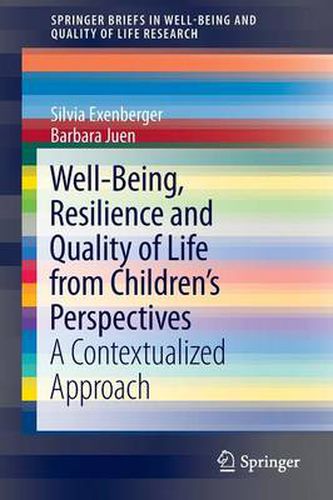Readings Newsletter
Become a Readings Member to make your shopping experience even easier.
Sign in or sign up for free!
You’re not far away from qualifying for FREE standard shipping within Australia
You’ve qualified for FREE standard shipping within Australia
The cart is loading…






This title is printed to order. This book may have been self-published. If so, we cannot guarantee the quality of the content. In the main most books will have gone through the editing process however some may not. We therefore suggest that you be aware of this before ordering this book. If in doubt check either the author or publisher’s details as we are unable to accept any returns unless they are faulty. Please contact us if you have any questions.
This book explores the broad view on child well-being and the quality of life research. It starts with a discussion of the origin of the social indicator movement and a review of literature on the concepts of quality of life, (subjective) well-being and resilience. It then discusses the force of culture on child development, and shows how two prototypical environments favor either the independent or interdependent self-model. After an exploration of the shifts and changes in the child well-being indicator movement and trends of child well-being measurements, the book turns to research on Tsunami-affected children. The first part of the study gives these children and their caregivers a voice, formulating in their words what constitutes child well-being for them in the given circumstances. The concepts provided are processed in detail, contrasted, and then made into indicators. The second part of the study describes the introduction of a child well-being index based on these indicators. The book ends with four main conclusions reflected in a theoretical model of contextualized child well-being indicators.
$9.00 standard shipping within Australia
FREE standard shipping within Australia for orders over $100.00
Express & International shipping calculated at checkout
This title is printed to order. This book may have been self-published. If so, we cannot guarantee the quality of the content. In the main most books will have gone through the editing process however some may not. We therefore suggest that you be aware of this before ordering this book. If in doubt check either the author or publisher’s details as we are unable to accept any returns unless they are faulty. Please contact us if you have any questions.
This book explores the broad view on child well-being and the quality of life research. It starts with a discussion of the origin of the social indicator movement and a review of literature on the concepts of quality of life, (subjective) well-being and resilience. It then discusses the force of culture on child development, and shows how two prototypical environments favor either the independent or interdependent self-model. After an exploration of the shifts and changes in the child well-being indicator movement and trends of child well-being measurements, the book turns to research on Tsunami-affected children. The first part of the study gives these children and their caregivers a voice, formulating in their words what constitutes child well-being for them in the given circumstances. The concepts provided are processed in detail, contrasted, and then made into indicators. The second part of the study describes the introduction of a child well-being index based on these indicators. The book ends with four main conclusions reflected in a theoretical model of contextualized child well-being indicators.